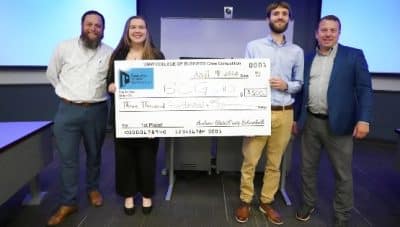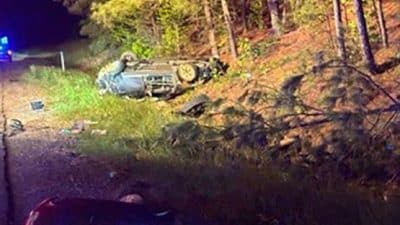
Take a deep breath. The air you’re breathing is home to tiny microbes that ride currents like molecular trapeze artists and can swing on transparent air streams for thousands of miles.
That is the subject of an article published in Scientific American this week by two Virginia Tech researchers who are examining what is in the air and using drones to learn how airborne microbes travel across the globe.
“Many of the microorganisms we collect in the atmosphere are understudied or even new to science. We are only just beginning to appreciate the tremendous biodiversity of microorganisms in our atmosphere,” wrote David Schmale and Shane Ross.
Schmale is a professor of plant pathology, physiology, and weed science in the College of Agriculture and Life Sciences and an affliated researcher with the Fralin Life Science Institute. Ross is an associate professor ofbiomedical engineering and mechanics in the College of Engineering.
The team writes about how they have tracked the acrobatic pathways of those microbes by discovering how they contribute to plant disease and weather patterns, and travel through air and on water.
“Microbes in the atmosphere may be pathogens of plants, animals, and people. Some live in the clouds as invisible weather-makers, nucleating rain, hail, and even snow. Others are professional surfers, riding atmospheric waves in search of new homes in new locations,” the team wrote in the article. “Understanding how and when these plant pathogens are transported through the atmosphere to susceptible crops is a prerequisite for managing disease.”
The article is also a window into discoveries using drones to research pathogens.
“New tools and technology enable us to answer important questions about where these microbes are coming from, where they are going, and what they are doing in the atmosphere,” the team wrote.
Schmale and Ross have been tracking different species of fungi in the genus Fusarium in the atmosphere with drones and ground-based sampling devices.
One species, Fusarium graminearum, produces two types of spores that may be released from the debris of corn and small grains. When these spores land on wheat and the silks of flowering corn, the fungus takes over the developing kernels. The fungus can produce dangerous toxins, such as deoxynivalenol and zearalenone, a mytotoxin that mimics the hormone estrogen. These toxins can threaten domestic animal health.
When the team analyzed Fusarium colonies collected in the atmosphere with drones, they found that some of the fungi were airborne for several hours, a sufficient amount of time to be affected by large-scale weather patterns tens to hundreds of miles long.
Dust also makes for handy molecular taxicabs. Some microbes travel across continents on dust particles when they might otherwise be subsumed by ultraviolet light exposure, the team wrote. So popular are the global dust lanes for microbes that an estimated hundreds of millions of tons of African dust land in Florida every year.
The pair also discuss how microbes induce weather. Some strains of the bacterium Pseudomonas syringae produce a protein that may facilitate precipitation. This bacterium is part of a commercial product that makes artificial snow.
Funding from a number of different programs through the National Science Foundation has supported the researchers’ work on the atmospheric transport of microorganisms.
Microorganisms are high fliers not only on land, but also in the sea and other aquatic environments as well. Schmale and Ross discovered that aerosolization of microbes may occur when waves crash, bubbles burst, wind sweeps across still water surfaces, or from impacts from droplets splashing.
The team has been collecting microbes using drones and unmanned boats in and over water. It is the next unexplored frontier of microbial transport, according to the team.
Still breathing?
To paraphrase Morpheus from the Matrix, “You think that’s air you’re breathing now?” How do you define air? Schmale and Ross say the answer might be more than oxygen — it may be the microbes themselves.










